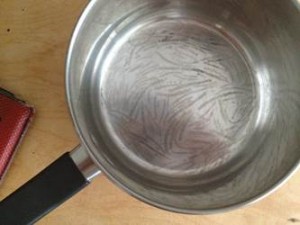\/\/\/\/\/\/\/\/Which key-notes would you like to share with all of us?
Participation is a practice based activity, a performative action, an unfolding of experience, an open work, an exchange. Participation accents the embodied nature of encounter, be it with words, ideas, images or forms, accenting the powerful resonances that may come about through contact and connection.
Engagement is central and time mediates the activity. Shared articulations of different conceptions of being in the world, different perspectives, different voices bring a conceptual site of dwelling: Thorsten’s support brought a physical site of dwelling.
Contributions could be considered speculatively through dialogue and exchange. Informal approaches supported equality, a non-hierarchical space.
The event brought a physical and psychological space of creativity, where participants were able to engage in different ways, with different persons, different concepts: the event highlighted the challenges of managing the more subtle modalities of thought and action.
That which may be captured may be explored. Art-making as an expressive practice occupies an uneasy territory between speculative and empiricist practices.
To reach beneath the obvious, one must be at ease and open to possibility.
Pluralistic approaches supported mobility between the particular and the general. Different frameworks marked out different territories as separate and significant, mirroring back to audiences and augmenting existing perspectives. The event brought different ways of seeing and experiencing, thinking and untangling.
Attunement to different perspectives can be exhausting and needs time and training to balance the needs of body, mind and spirit.
Ornament and gesture are intrinsically linked through the action of doing and being in the world.
\/\/\/\/\/\/\/\/What is the relevance of WOF in your work? How do its aspects reflect in your current projects and how could you imagine integrating the questions WOF raised in future projects?
Ornament and gesture may be explored as operative elements of art–making: that which at first may appear random, unreadable, unfathomable or nonsensical may build over time to inhabit new spaces of creativity and assert agency of the individual. Ornament as gesture: a gesture towards a manner of capture through which a telling is made possible.
Attunement to different perspectives may be explored through a commitment to artistic process. Metaphorically walking the territory, exploring marginal areas, resisting the banalisation of the everyday through artistic practices.
To reach beneath the obvious, one must be at ease and open to possibility. Ideas of the pause creates an interruption in the continuous flow of the everyday. Practices of mindfulness may support letting something into its own presencing, resisting conceptions of complete knowledge towards examing interstices, exploring liminal spaces at the meeting point of a number of ideas. Challenge the authority view: the pause supports narratives to emerge that are particular to the person.
That which may be captured may be explored. The person comes to know her–/himself through encounters with the other. Observing, looking, noticing, speaking and listening are forms of performative action. Sites of encounter where multiple resonances, multiple intensities may be explored are crucial. Discernment, trust, presentness, ‘anti–numbness’ strategies, developmental methods, speculative actions may be explored.
The event brought a physical and psychological space of creativity. An existential space, in which body and mind may take up their residence in the world. A space for in the moment action, improvisation, elaboration, a testing ground for new ideas, movement from inertia to possibility.
Contributions could be considered speculatively. Brings opportunity to critically review processes and methods to consider the ways in which various stages of artistic action and reflection may work together productively.
Engagement is central and time mediates the activity. Commitment to process is an essential aspect of developmental activity: time may be mediated by artistic means, in the moment encounter, embodied experience. Different rhythms support different conditions. Change may be both temporal and temporary.
Participation is a practice based activity. Without action there is inertia. Participatory action may take many forms from speaking and listening, to simply being there. Action and reflection are part of artistic practice.
